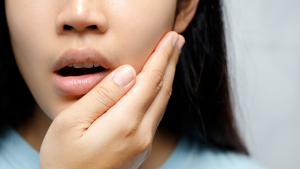
|

|

|

|

All you need to know about wisdom tooth extraction
Wisdom teeth, also called third molars are the last of the permanent adult teeth which erupt in early adulthood. As opposed to the common assumption, there is no need for wisdom tooth extraction if they are not causing any problems. They are only removed if there is not enough space in the mouth for them or if they are causing discomfort to the patient.
Wisdom tooth extraction is a surgical procedure and is usually completed in a single appointment. Let us try to understand more about the wisdom tooth extraction procedure.
Cause of wisdom teeth extraction
Wisdom teeth usually grow in the four last corners of the mouth, usually in young adulthood. Many people grow out these teeth normally just like other teeth, in other cases, the wisdom tooth usually causes a lot of pain and discomfort to the patient. This usually happens if the teeth have grown at odd angles toward other teeth.
This condition causes difficulty and pain during chewing and speaking. Food particles may also get trapped in the space between the teeth and the gumline, causing bacteria to accumulate. Furthermore, this bacterial accumulation can cause various dental disorders like tooth decay, cavities, and eventually, tooth loss. To prevent such adverse diseases and conditions, the wisdom tooth is extracted from the mouth.
Dental examination for wisdom teeth extraction
Before beginning any dental procedure, the teeth have to be thoroughly examined. First, the dentist will physically examine the teeth and will observe the wisdom tooth and understand if it had to be removed. Then, the patient may be sent to get X-rays or digital imagery to accurately picture the wisdom tooth and its position and a plan will be made for its removal.
During this step, the patient will also be asked if any discomfort is caused by the wisdom teeth. Also, the patient should accurately inform the dentist about any other dental conditions, if there are any. This will help to avoid any complications that may be caused due to other dental conditions.
The wisdom teeth extraction procedure
Just like any other surgical procedure, in a wisdom tooth extraction, the dentist will begin the procedure by administering local anesthesia. The patient will remain awake during the extraction but will not feel pain.
Local anesthetic is injected into the patient’s gumline, whereas, if the patient is given general anesthesia, it has to be inhaled via the nose or given through the IV route of administration. After making sure that the anesthesia has been successfully administered, the dentist will begin with the procedure.
The dentist will make an incision in the gumline near the wisdom tooth with the help of specialized dental tools. It is made to expose the jawbone. If this jawbone area is blocking the way to the root of the wisdom tooth, then it is removed. When removing the tooth, it is sometimes cut into pieces if removal is proving difficult. After removal, the site of this tooth is cleansed with an antiseptic solution to get rid of accumulated food particles and microbial accumulation. The incision is stitched back if the wound is too deep. A sterile dental gauze is placed on the wound to promote healing and stop bleeding and clot formation.
Aftercare
A few hours after the extraction, there may be bleeding from the site. Although the wound will be stitched, the patient is supposed to spit the blood that flows into the mouth. The sterile gauze is also supposed to be replaced by a new one if it is completely soaked in blood and is not stopping the bleeding. If the bleeding continues for more than a day, the patient is supposed to immediately contact the dentist.
Swelling and bruising are also common side effects of this procedure. The patient can use ice packs and can press them gently against the cheek for relief. The swelling will disappear within a few days and the bruising within a few weeks. All the pain caused due to excessive bleeding and swelling can be managed with medications like acetaminophen or other prescription drugs.
Beverages that are too hot or cold, foods that could potentially hurt the sore gums and the wound. The patient is advised to consume soft foods that are easy to chew and these must be at normal room temperature. Remember, for quick recovery, you may have to make a lot of changes in your diet. Tobacco, alcohol, and nicotine consumption can also delay healing and can affect the patient’s health, these should be avoided to prevent such complications. Also, the patient is supposed to be extra careful while cleaning the teeth, as the wound remains sensitive for a few days. Brushing the teeth and flossing them should be done after the first 24 hours of the procedure.
When to be concerned
Experiencing discomfort for a few days after the procedure is very normal and the patient doesn’t need to be concerned about it if the symptoms are mild and tolerable. However, if symptoms continue to show up even after a few days, the patient should contact the dentist to avoid serious complications.
Excessive bleeding is one such condition the patient should look out for. Bleeding from the wound may continue for a day or two. If it exceeds this period, the patient is supposed to check the wound and see if it is becoming deeper instead of healing. If this is the case, the patient must contact the dentist immediately as this indicates serious damage to the jawbone and gums.
Extreme fever that doesn’t go away in a few days should also be informed to the dentist. Another serious adverse effect the patient should look out for is difficulty in swallowing and breathing. This could lead to choking due to blockage of air passage down the throat.
Swelling or pain that doesn’t go away is also a warning sign of serious complications. If the swelling becomes worse after a few days and the pain persists even after taking prescribed medications, the patient should immediately contact the dentist.






